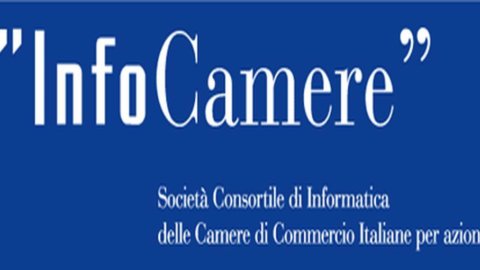Business closures slowed down in the first quarter of 2015, but registrations also reached their lowest level for several years. The result is a negative balance of -18.685 units but less substantial than in previous years. This is the dynamic of the entrepreneurial fabric that emerges from the analysis of the Movimprese data, relating to the birth-death rate of Italian companies between January and March, processed by InfoCamere on the basis of the Business Register and disseminated by Unioncamere. All the data, as usual, are available online at www.infocamere.it In the first quarter of the year – traditionally characterized by a negative balance between business registrations and closures, due to the concentration of the latter towards the end of the previous year – 114.502 new economic initiatives were born, 872 less than in the same period last year, the fourth consecutive decrease in the number of new businesses registered in the registers of the Chambers of Commerce. Much more significant, however, was the reduction in the closures of existing companies (133.187 closures, the lowest value in the last ten years) with the result that, although closing in the negative range, the balance for the first quarter of 2015 (equal to -18.685 units) marks a relative improvement over the same quarter in the previous three years.
Considering the fact that in 2014 (against a negative first quarter balance of 24.490 units) the year ended with a positive balance for 30.718 businesses, the containment of the negative balance in the first three months of this year leaves room for expectations moderately positive on the overall balance for 2015. "The dynamics of the entrepreneurial fabric in the first three months of the year", said the president of Unioncamere, Ferruccio Dardanello, "reflects the historical moment that our country is experiencing, in which on the one hand there are signs of recovery, on the other hand the effects of this long crisis are still being discounted. Above all, some areas still show a certain difficulty: craftsmanship in particular, which alone explains the entire negative balance of manufacturing and construction”. From the point of view of the legal forms adopted by companies, the contribution against the trend comes from joint-stock companies (11.482 more companies in the quarter, equal to a positive growth rate of 0,77% and even an improvement compared to 2014). The good performance of innovative start-ups registered in the appropriate section of the Business Register should be interpreted in this context: in fact, 368 were born in the first three months of the year (almost all in the form of joint-stock companies), against 229 in the same period of 2014.
The other forms (cooperatives and consortia) also grew slightly, while, while recovering somewhat compared to 2014, both sole proprietorships (-24.998 units, of which 12.808 artisans) and partnerships (the overall balance -5.527) decreased -2.400 the of which craftsman). The analysis at the territorial level shows negative balances in all four major divisions, each in any case showing a slight improvement compared to a year ago. Among the regions, Lazio is the only one to record a positive balance, albeit limited (418 more companies, 0,07%). Of the others, in six cases (in geographical order: Trentino-AltoAdige, Umbria, Abruzzo, Molise, Basilicata and Sicily) the first quarter of 2015 closed with a worse result than in 2014. Among the artisans, none of the regions closed with a positive result and those in further contraction compared to the same quarter of last year there are five: again Trentino-Alto Adige, Emilia-Romagna, Marche, Lazio and Abruzzo. Looking at the sectors, the only ones that see their entrepreneurial base increase appreciably are those of rental, travel agencies and business services (+1.953 companies, of which 501 artisans), information and communication services (+534) and health and social services (+237). As mentioned, the construction sector is behind the most, globally responsible for 41,7% of the entire negative balance (7.785 companies less). And this despite the fact that the non-handicraft sector grew slightly in the period: in fact, looking only at handicraft companies, the construction balance reports -8.701 units, a value which alone completely explains the further setback in the building sector. This is followed by manufacturing activities which decreased by 3.210 units (-0,56%). Bankruptcies are slowing down: between January and March, 3.588 companies opened bankruptcy proceedings, against the 3.607 that had brought their books to court in the first quarter of 2014.
In percentage terms, the comparison with the previous year therefore signals a slight slowdown (-0,5%) of the phenomenon, after the strong acceleration of 2014: last year, in the first three months there was a 22% growth in the opening of bankruptcy proceedings compared to the corresponding quarter of 2013. Compared to the Italian entrepreneurial structure, which has about 6 million companies registered in the archives of the Chambers of Commerce, the phenomenon of bankruptcies therefore concerns a very limited number of companies, in the order of 6 every 10 thousand. However, the stabilization of the flow of new bankruptcies is the result of opposite dynamics, depending on the legal form of the company. Against an increase of 1,1% in the bankruptcies of corporations and 26,7% of "other forms" (consortia and cooperatives), there was a decrease in the defaults of partnerships and sole proprietorships (respectively - 9,2 and -12,3% compared to the first quarter of 2014). Looking at the distribution of bankruptcies by sector, the one that contributes most in absolute terms is trade (859 bankruptcies, equal to 24% of the total). Construction follows with 735 events (20,5%) and the manufacturing industry with 676 (19,8%). As regards the incidence of the phenomenon - net of smaller sectors - the exposure of companies to the risk of bankruptcy is higher among manufacturing activities (11,5 openings for every 10 registered companies).





